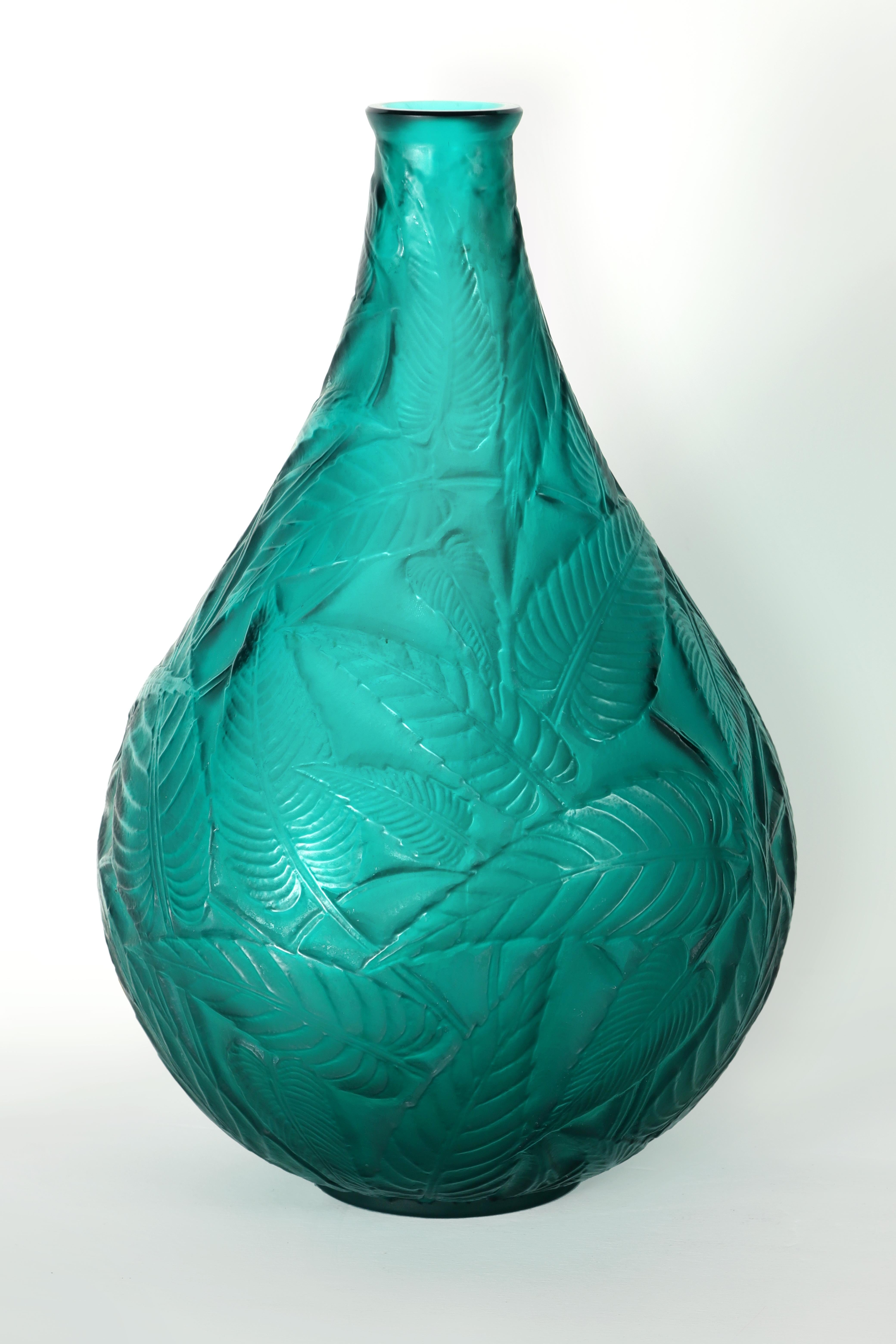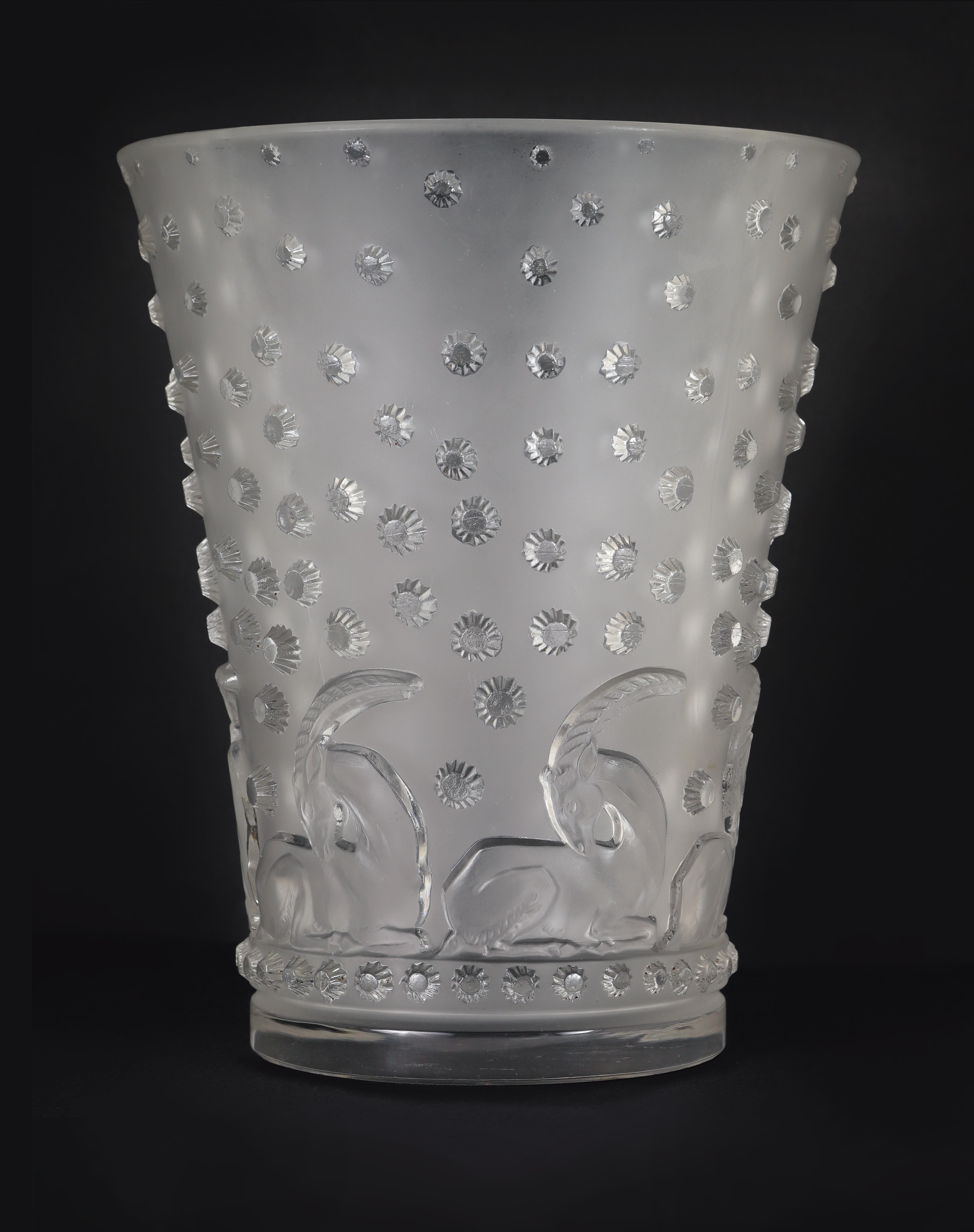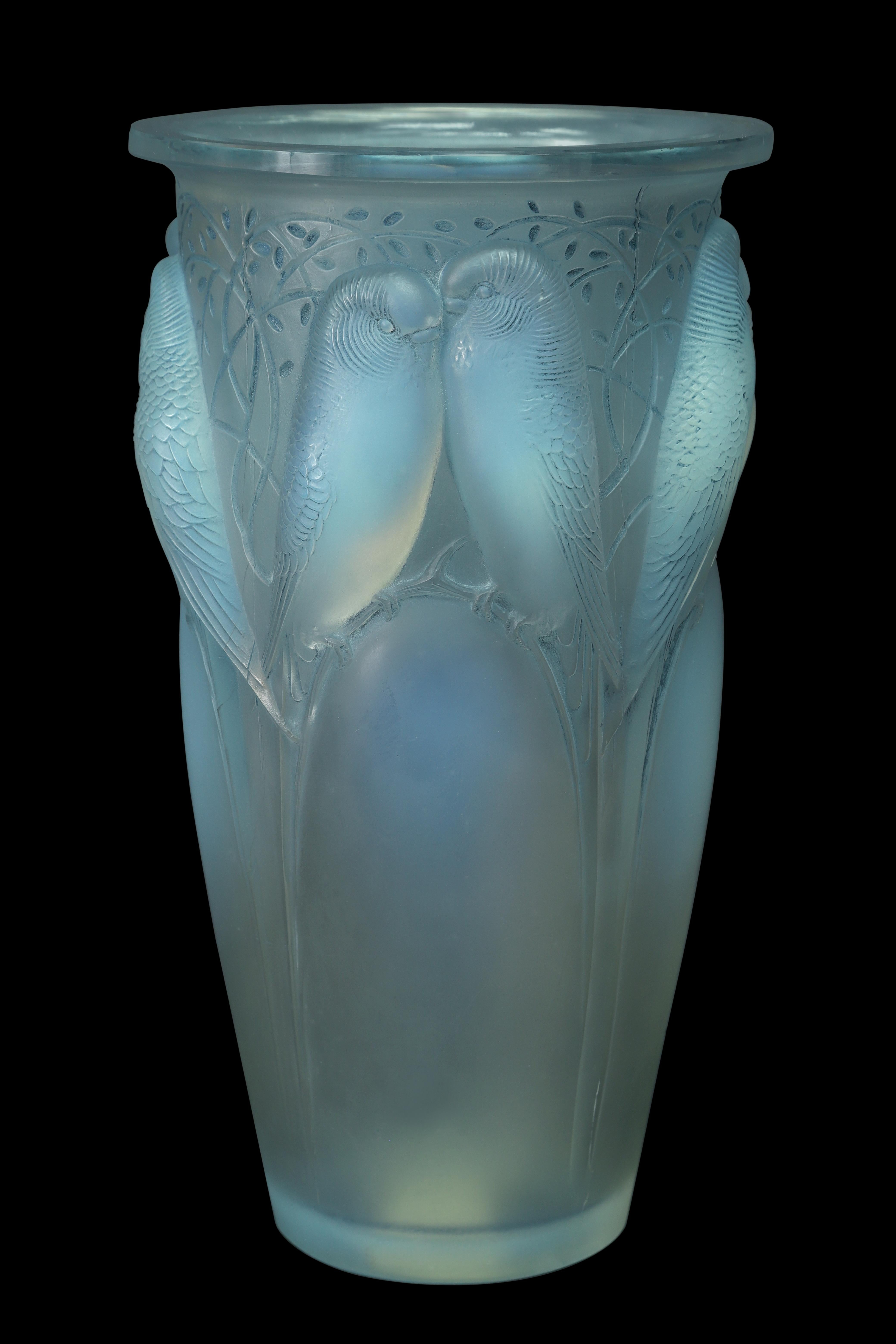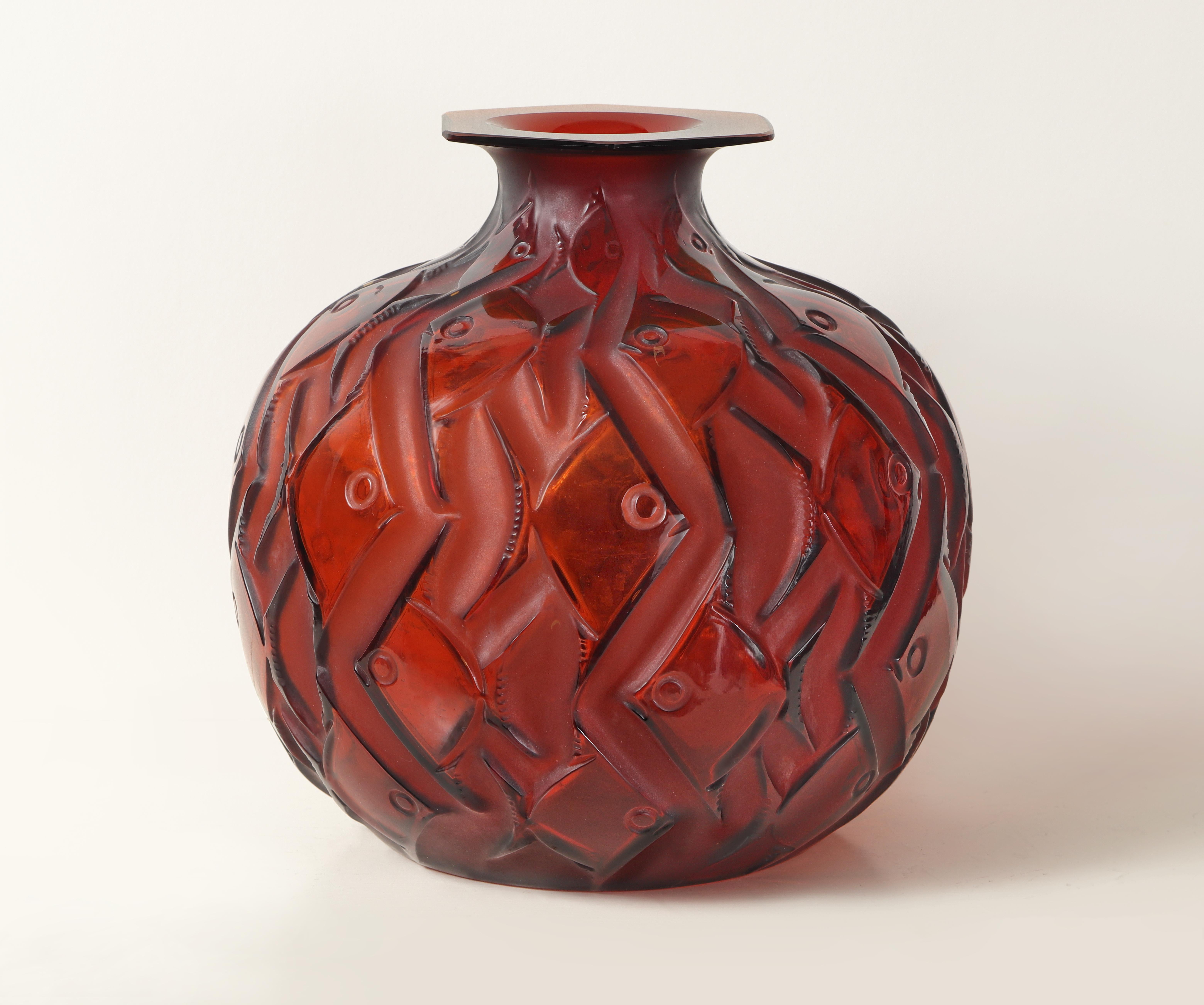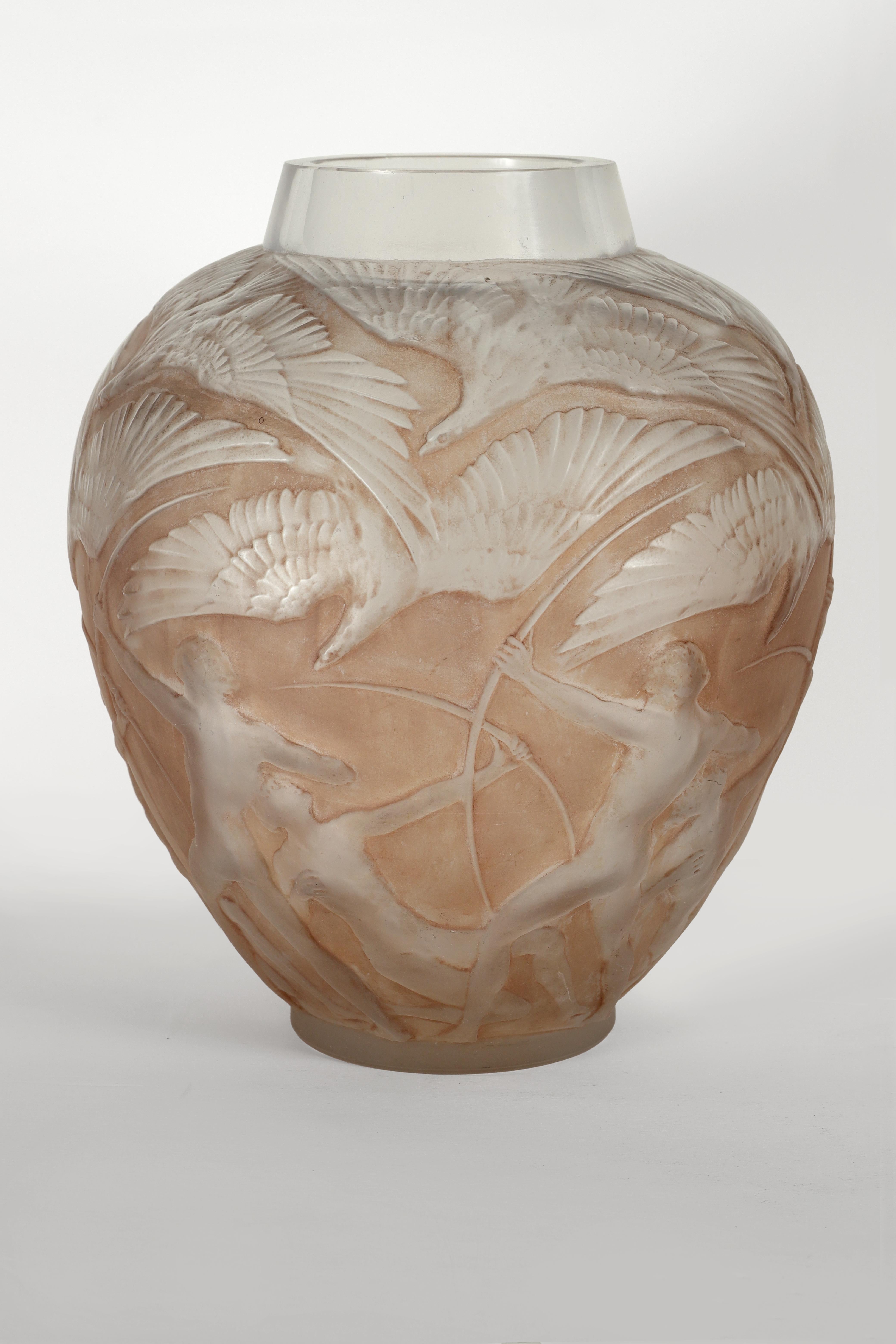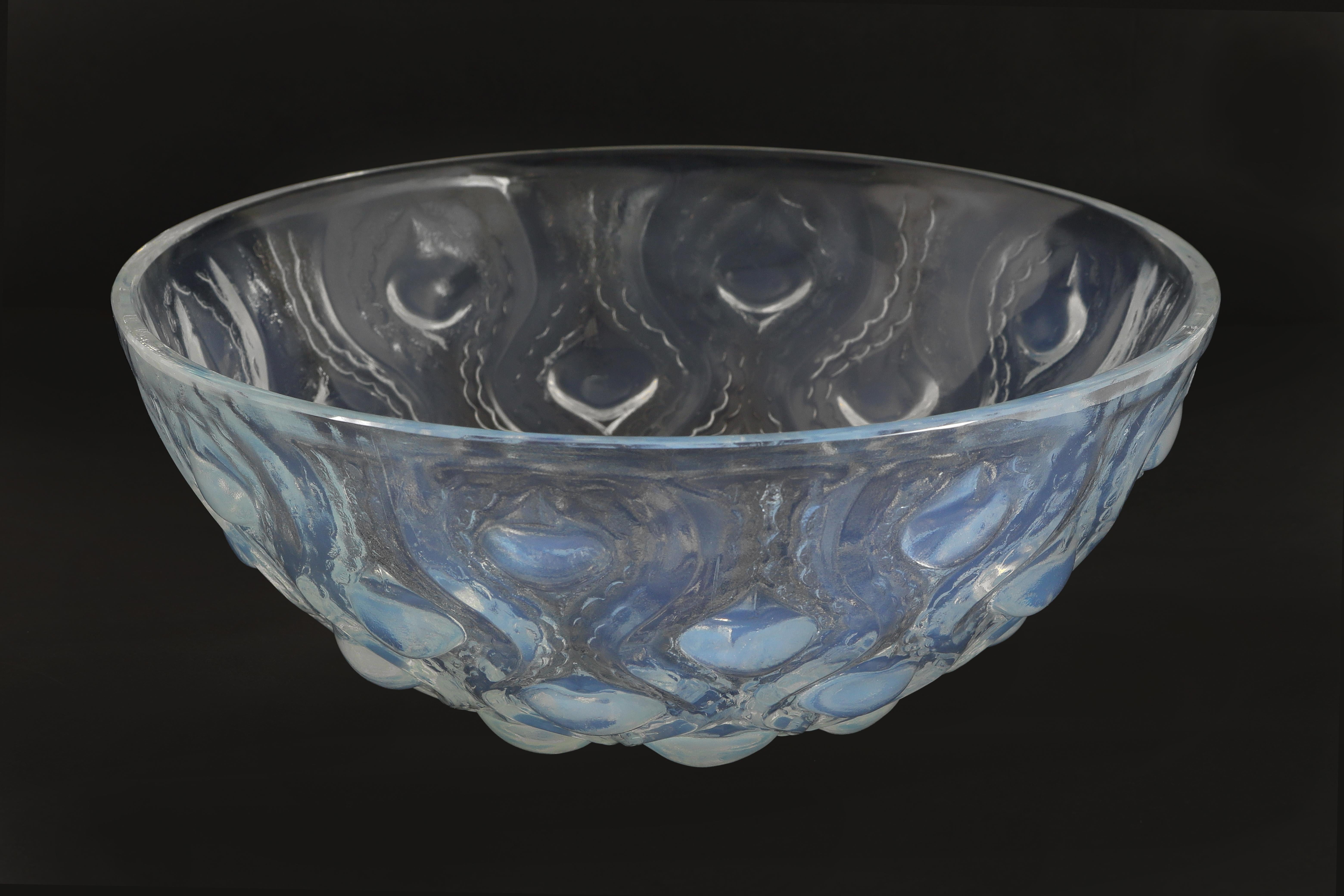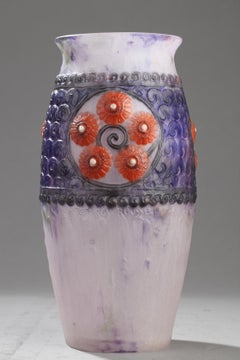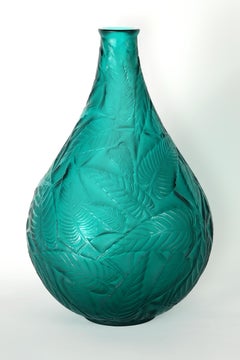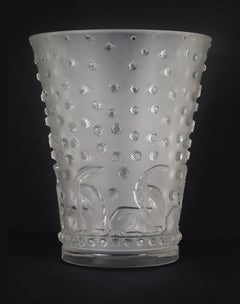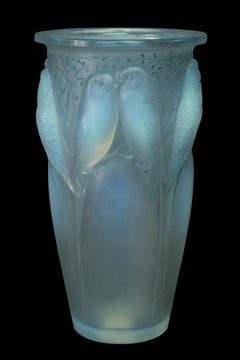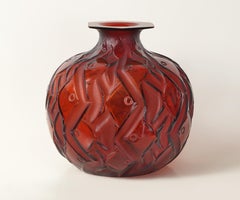Items Similar to Stained-glass window
Want more images or videos?
Request additional images or videos from the seller
1 of 6
François-Emile DecorchemontStained-glass window1934
1934
About the Item
« Ave Maria – Gratia Plena »
Hail Mary full of grace
by François-Emile Decorchemont (1880-1971)
A large and exceptional stained-glass window.
Masterpiece by François Décorchemont.
Stained glass colored in the mass and worked in relief.
Blackened metal frame, cement joints.
SIgned and dated 1934
France
height 125 cm
width 175 cm
It was exhibited at the Salon des Artistes décorateurs in 1934.
This very rare stained glass window was part of Décorchemont's first research in the field of stained glass, before the adventure of the stained glass windows of Saint-Odile Church, in Paris (17th district).
Biography :
François Émile Décorchemont (1880-1971) was a French ceramist and glassmaker. Coming from a family of artists, he studied at the National School of Decorative Arts in Paris, and then made many cameo glass objects that bring him notoriety. Décorchemont invented then a new material, the crystal paste. In the spring of 1912, François Décorchemont presented for the first time at the Salon des Artistes Décorateurs, then at the Salon des Artistes Français, a set of pieces that testified to a new path taken by the artist. The thick and translucent walls, powerful and luminous, of these creations contrasted with the extreme finesse and opacity of the models that, since 1903, date from his beginnings, characterized his glass works.
From 1909, while maintaining his production of fine cameo glass, François Décorchemont was engaged in the experimentation of a new molding technique. With the help of his father, Louis-Emile Décorchemont (1851-1920), a sculptor, collaborator of Jean-Léon Gérôme and professor of sculpture at the National School of Decorative Arts in Paris, he undertook to adapt the process of lost wax casting to glass. At the same time, he was experimenting with a new vitrified paste composition ensuring transparency and light. Of a sensitivity close to the works of Albert Dammouse, the creations of Décorchemont were distinguished however by the refusal of the molding on nature of the natural elements and by a desire for sculptural effects emphasizing the forms and the constructive lines of his decors. This new conception of ornament and this quest for a thick and translucent material, from a perspective that was not only decorative but also constructive, was in line with contemporary research by René Lalique, whose technical advances during the 1910s were part of the same desire for aesthetic renewal.
As a fervent Catholic, it was while attending the church of his village, ornated with windows of the Renaissance, that in the 1930s, it came to him the idea to apply his technique to the art of stained glass. François Décorchemont then developed a unique technique to design stained glass windows not in painted glass but in colored cameo glass in the mass. His new activity began with the construction of the church Sainte-Odile in Paris for which he realized the 300 m2 of windows. At the end of the war, he worked mainly in the Eure, where he posed no less than 130 stained glass windows in thirty churches, including the remarkable ensembles of Beuzeville, Etrépagny or Ménesqueville. François Décorchemont also intervened at the Saint-Wandrille Abbey in Saint-Wandrille-Rançon (Seine-Maritime), at the former convent of Folie Couvrechef in Caen and at the parish church of Fontaine-Henri (Calvados).
Very discreet and not communicating, François Décorchemont kept secret his discoveries and his techniques. Painter, ceramist, glassmaker, he created all his works, drawing, mold, finishing. His work was characterized by a clean design, simple lines and brightness, transparency and brightness of colors. His creations had no functional value but only aesthetic because of their fragility and their cost of production. He edited his works in small series and did not seek performance but aesthetics.
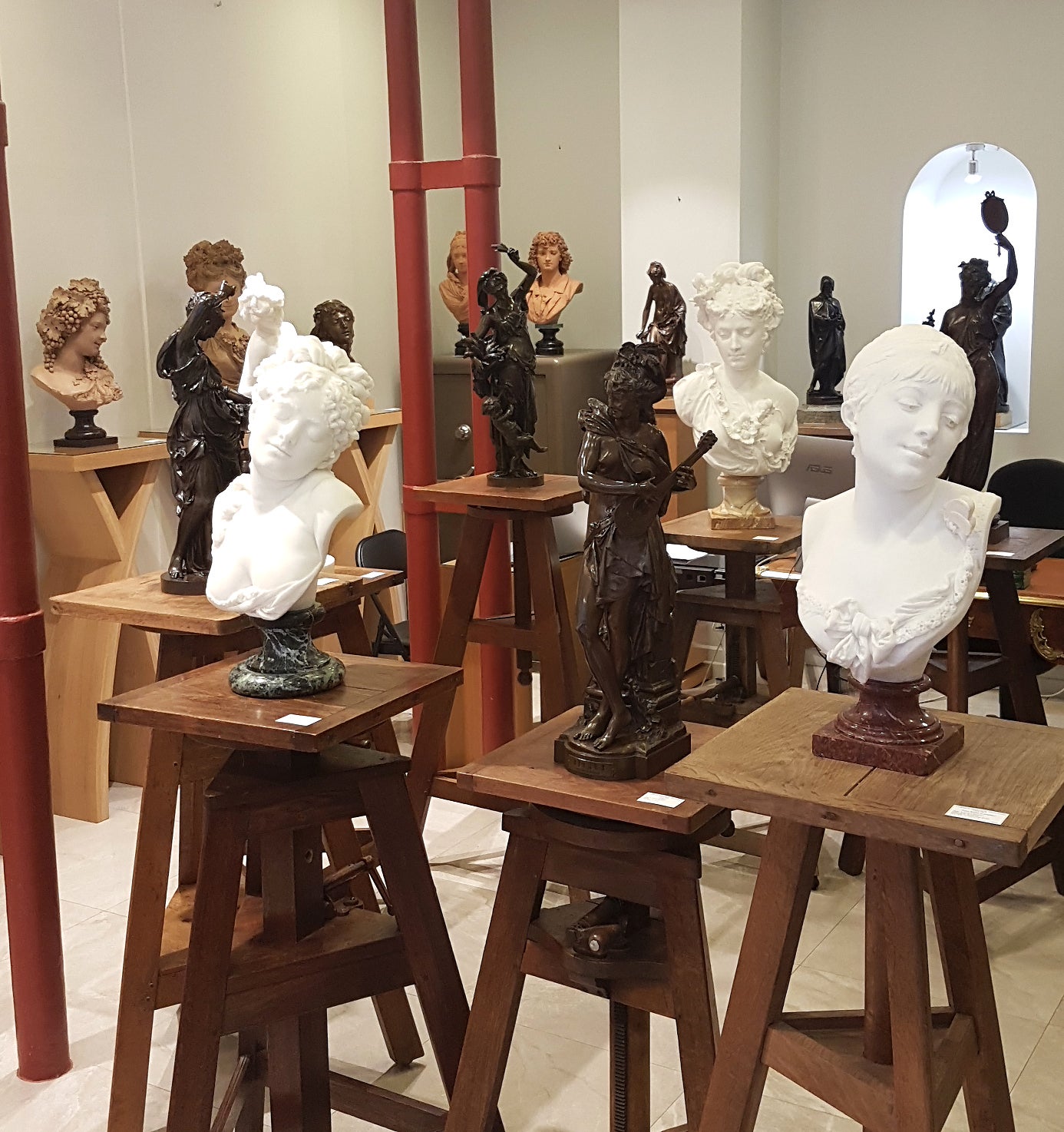
About the Seller
5.0
Recognized Seller
These prestigious sellers are industry leaders and represent the highest echelon for item quality and design.
Established in 1992
1stDibs seller since 2023
6 sales on 1stDibs
Typical response time: 15 hours
- ShippingRetrieving quote...Shipping from: PARIS, France
- Return Policy
Authenticity Guarantee
In the unlikely event there’s an issue with an item’s authenticity, contact us within 1 year for a full refund. DetailsMoney-Back Guarantee
If your item is not as described, is damaged in transit, or does not arrive, contact us within 7 days for a full refund. Details24-Hour Cancellation
You have a 24-hour grace period in which to reconsider your purchase, with no questions asked.Vetted Professional Sellers
Our world-class sellers must adhere to strict standards for service and quality, maintaining the integrity of our listings.Price-Match Guarantee
If you find that a seller listed the same item for a lower price elsewhere, we’ll match it.Trusted Global Delivery
Our best-in-class carrier network provides specialized shipping options worldwide, including custom delivery.More From This Seller
View AllVase with Flowery medallions
Located in PARIS, FR
Vase known as "Flowery medallions"
Gabriel ARGY-ROUSSEAU (1885-1953)
Made in cameo glass (pâte de verre),
ornated with a wide violet-blue wave motif frieze,
adorned with three red-c...
Category
1920s Art Deco More Art
Materials
Glass
Art Deco Vase
By Daum
Located in PARIS, FR
Art Deco Vase
by DAUM
"Art Deco" vase with geometric decoration
Transparent blue blown-molded glass
Decor deeply etched with acid
Signed "Daum Nancy France" with the Cross of Lorrai...
Category
1930s Art Deco More Art
Materials
Glass
"Funnel" Cup
Located in PARIS, FR
"Funnel" Cup
by François DECORCHEMONT (1880-1971)
"Funnel" cup
model 27
Cameo glass
France
Model created in 1912
and distributed until 1917
18 works made
height 11,6 cm
diameter ...
Category
1910s Art Deco More Art
Materials
Glass
Pair of vases
Located in PARIS, FR
Pair of vases
by Jean MAYODON (1893–1967)
Pair of white tin-glazedearthenware vases
decorated with deer treated in relief,
green interiors and gilded feet.
France
1st half of the 2...
Category
Early 20th Century Art Deco More Art
Materials
Ceramic, Earthenware
Panther sniffing
By Georges Lucien Guyot
Located in PARIS, FR
Panther sniffing
by Georges GUYOT (1885-1972)
Rare sculpture in bronze with a nuanced dark brown patina
Signed on the base " Guyot "
Cast by " Susse Frères Editeurs Paris " (with the foundry mark)
France
circa 1935
height 33,5 cm
length 49 cm
depth 12 cm
Biography :
Georges Lucien Guyot (1885-1973) known as Georges Guyot was a French animal artist. From an early age, he showed artistic abilities, but the modest conditions of his parents did not allow him to study art. He was doing his apprenticeship with a woodcarver. Guyot then excelled at copying works of the fifteenth, sixteenth and seventeenth centuries, but soon he showed a special attraction for nature. This attraction led him to the Jardin des Plantes in Paris where he could study wild animals and translated his observations into sculpture and painting.
As a famous figure of Montmartre, he was the host of the Bateau-Lavoir from the time of Cubism. In 1931, Georges Guyot joined the group of "The Twelve", created by François Pompon and Jane Poupelet, gathering sculptors like Marcel Lémar, Paul Jouve, André Margat, Jean-Claude de Saint-Marceaux, Georges Hilbert, or even the painter Adrienne Jouclard...
Category
1930s Art Deco Figurative Sculptures
Materials
Bronze
Bogota's Glory
By Henri Bouchard
Located in PARIS, FR
Bogota's Glory
by Henri Bouchard (1875-1960)
Sculpture in bronze with a nuanced yellow-brown patina
Signed "H. Bouchard" on the base
Cast by "Siot" (stamp)
France
circa 1927
height...
Category
1920s Art Deco Figurative Sculptures
Materials
Bronze
You May Also Like
Sauge
By René Lalique
Located in Miami, FL
Rene Lalique
"Sauge" vase, created by René Lalique in 1923.
Signed under the base: R.LALIQUE
Molded glass with green patina.
Art Deco style, France, circa 1923.
In excelent conditi...
Category
Early 20th Century Art Deco More Art
Materials
Glass
£3,041
Ajaccio Vase
By René Lalique
Located in Miami, FL
Rene Lalique
Ajaccio Vase, 1938
Frosted Glass
8 x 6 in
cod 10-914 on the Catalogue Raisonne
Category
Early 20th Century Art Deco More Art
Materials
Glass
Ceylan
By René Lalique
Located in Miami, FL
Rene Lalique
"Ceylan" Opalescent Vase, circa 1924
9 in
Opalescent patinated pressed white
glass and top color.
Cod 905
Provenance:
Lloyd Glasgow Collection, New York.
Heritage Aucti...
Category
Early 20th Century Art Deco More Art
Materials
Glass
£6,083
Vase Penthievre
By René Lalique
Located in Miami, FL
R.Lalique
Vase Penthievre (Fancy Fish) 1928
white blown-molded glass with patina and high color
10,5 x 10,5 in
Category
Early 20th Century Art Deco More Art
Materials
Glass
Arches
By René Lalique
Located in Miami, FL
R. Lalique
Archers, 1921-1947
Opalescent and colored blown-molded white glass with patina
10 in
Perfect Condition
Category
Early 20th Century Art Deco More Art
Materials
Blown Glass
£6,464
Bulbes no 2
By René Lalique
Located in Miami, FL
Rene Lalique
Bulbes no 2, 1935
Molded pressed and opalescent white glass
3 x 8 in
cod 3300 V1
Category
1930s Art Deco More Art
Materials
Glass
Recently Viewed
View AllMore Ways To Browse
Stained Glass Used
Small Art Decor
Paris Window
Art Form1920
Framed Stained Glass
Stain Glass Windows
Large Stained Glass
French Stained Glass
Vintage French Windows
Used Metal Windows
Contemporary Stained Glass
Stained Glass Art Window
Catholic Art
Art Glass Ornaments
Black Metal Windows
Church Glass Window
Painted Stained Glass Window
Stained Glass Nature
